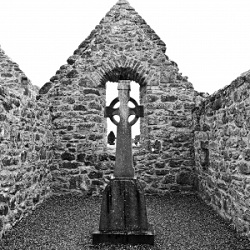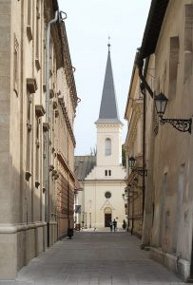Church Planting Thirty Years Later

In 1982 my wife and I planted our first church in Philadelphia – Faith Independent Baptist Church. The long church name seemed awkward back then but I wanted to be sure people knew up front where I stood. Fresh from eight years of ministry training at fundamentalist schools, I was a committed independent, fundamental Baptist. As extra insurance to validate my IFB credentials, I often added “militant and separatist” as well. The church’s doctrinal statement enshrined a dispensational hermeneutic essential for correct interpretation, the pre-tribulational rapture as the next event on the prophetic calendar, and the King James Version as the official translation. As a church we were known more for what we were against than for who we were.
Fast forward to 2011 where in the same city I am now working with a team of elders to plant another church in a spiritual wasteland where we parachuted in with a few families but without a significant core group. After thirty years of church planting I claim no special expertise, offer no guarantees of success, and sense an even greater dependency upon the Lord to build His church. Similar struggles, resistance to the gospel remain.
This one-year-old church is elder led, non-denominational, non-dispensational, and uses the English Standard Version. Much has changed. Most remains the same. I would venture to add that what is essential has not changed. In areas where change has occurred, thirty years of ministry, of study, of relationships, and of experiences have conspired to bring me to the place I am today. For many years IFB was all I knew or cared to know. Now I find myself rarely at home in this fragmented movement of competing networks. I find myself increasingly on the outside looking in. This is my journey, but I’m glad I was not alone.
After planting a church in Philadelphia from 1982-1987 my family and I went to France and then Romania in church planting and pastoral training ministry. Those years spent overseas provided opportunities for fellowship with believers from different horizons and spared me the need to engage in many of the needless conflicts being fought in the States. There was less need to conform to others’ expectations of what it meant to be safely within the fundamentalist orbit.
Discussion
Taking the Gospel to the City
 Reprinted with permission from Paraklesis Winter 2011. Paraklesis is a publication of Baptist Bible College & Seminary.
Reprinted with permission from Paraklesis Winter 2011. Paraklesis is a publication of Baptist Bible College & Seminary.
Discussion
Left Behind: The Apparent Absence of Fundamentalists in Resurgent Church Planting

While Fundamentalists often noisily do battle over issues important mostly to their sub-culture, there is a battlefield where Fundamentalists are conspicuous by their absence. There has been a resurgence in church planting in North America and few Fundamentalist churches have answered the call. The names of leaders in this resurgence are well-known and include Mark Driscoll, Tim Keller, Bob Roberts, and Ed Stetzer, to name a few. Whatever Fundamentalists think of these men, let there be no doubt that they are engaged in the most noble of tasks—the Great Commission—on a scale rarely seen and in cities which, with some notable exceptions, have been long abandoned by solid, Bible-believing churches. These leaders are not without their foibles, and controversy often surrounds or follows some of them. That said, it must be asked if there are any church planting movements in Fundamentalism with the depth and breadth of what is taking place in conservative evangelical circles.
Recently I attended a conference on church planting where several thousand active or prospective church planters and their wives were in attendance. Admittedly the presenters and attendees were from diverse evangelical backgrounds, a blessing in many ways in witnessing the diversity and unity of the body of Christ. Many in attendance could not plant churches together, a fact they recognized, due to doctrinal differences that are at the heart of one’s understanding of the nature the local church. One speaker, a prominent Southern Baptist leader, expressed his friendship with and admiration for Tim Keller, yet confessed that they could not plant a church together. There would be an immediate conflict over needing a bowl or a bathtub to baptize the first convert. Yet in spite of obvious differences and the inability to partner in church planting there was a laudable spirit of cooperation to help others plant churches by providing training, mentoring, and access to resources.
Discussion
God Came to "Kopano"

Kopano Baptist Church near Pretoria, South Africa, is about as unassuming an assembly as you will find anywhere on planet earth. Actually, you won’t find it at all unless an informed local leads you there. This fledgling church is tucked away off a rural road in a dusty village where neither fame nor fortune has ever dared show face. But God has.
According to church-growth gurus, Kopano Baptist Church is doing absolutely everything wrong. But unfazed by the dictates of such experts, God is working wonders in this obscure village through this humble church. Theirs is a story that will never be recorded on the glossy pages of prestigious journals or heralded in documentaries touting the latest ecclesiastical success story. Yet theirs is a story worthy of broadcast.
The village Kopano serves has no running water or sewer, no asphalt or gravel roads, no cars, sidewalks, street lamps or grass. Here the only things in noticeable abundance are stray dogs, brazen rats, cheap booze and abject poverty.
Kopano Baptist Church meets in an abandoned produce barn: no windows or interior walls, no carpet or restrooms, no banners, crosses, pictures, or decorative touches of any sort save the small hand-painted sign attached to the front wall that reads simply: “Kopano Baptist Church.” A few plastic chairs supplement the wooden crates that serve as pews. A string of four naked bulbs hangs over the center aisle—the electricity supplied via an extension cord plugged into the outlet of a nearby flat. Several candles waxed to the cement floor encircle the assembly to serve during the inevitable power outage. Parishioners share space with the rats—an improvement on an earlier day when rats shared space with the parishioners.

Discussion